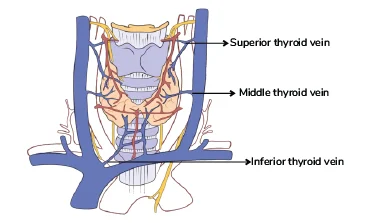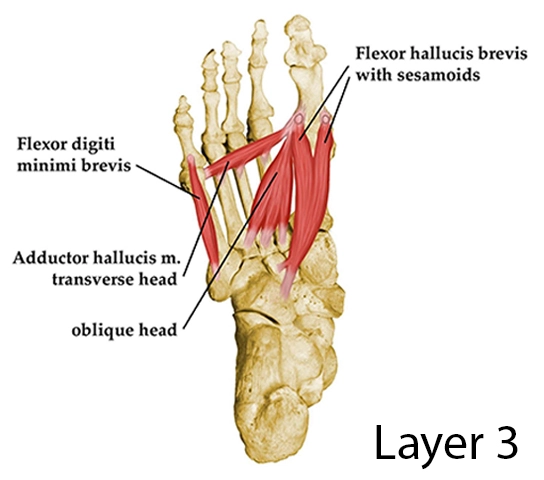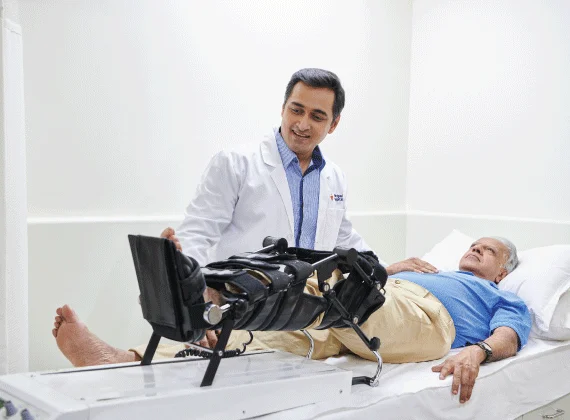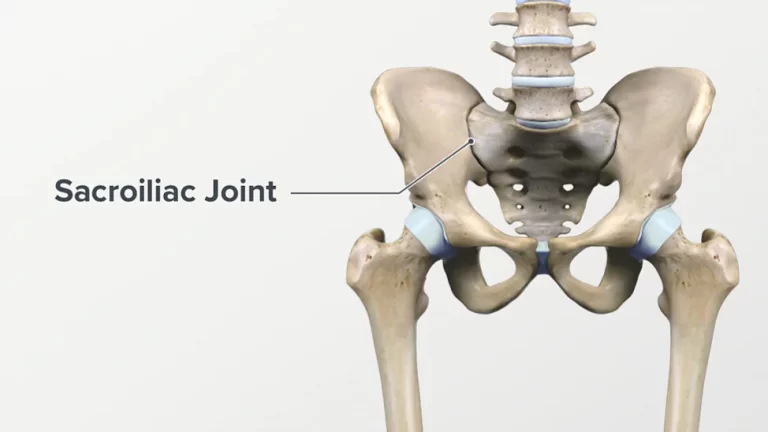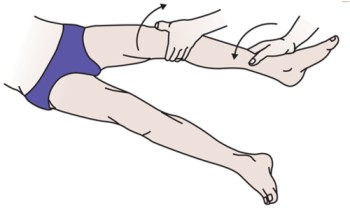Thyroid Vein
Introduction
The thyroid veins belong to the venous drainage system of the thyroid gland, which is a major endocrine organ involved in metabolic regulation through hormone production. The superior, middle, and inferior thyroid veins are the three important couples of thyroid veins based on their anatomical placements. Each pair has an awesome manner and pattern of draining blood from the thyroid gland.
It is typical for the superior human frame’s thyroid veins to open into internal jugular veins after casting off a high-quality layer of the gland. This middle thyroid vein drains blood from the center fragment of the thyroids typically or gets terminated into the internal jugular vein anatomically in human beings. Among all others, this is the largest vein that comes from it and goes into a brachiocephalic vein after emptying its contents at the lower side. The optimal functioning of these vessels is imperative for maintaining healthy thyroids and overall hormonal balance. Thyroid disorders may develop when there are interruptions or anomalies in these veins.
To diagnose and treat thyroid-related disorders and during operations involving the thyroid gland, knowledge of the structure and physiology of thyroid veins is necessary.
Thyroid’s Veins: What Is Their Site Like?
From the front mandibular region, where the thyroid gland is located, these veins that carry oxygenated blood are called thyroid veins Here we take a closer look at these veins and where they are placed.
Thyroid Veins: What Does This Mean?
These veins form an intricate network that drains blood from the thyroid gland and brings it back to the heart of the human body. They play an important role in venous drainage of the neck where it’s maintaining proper blood flow and hormone balance in anatomical body structures.
Types of Thyroid Veins Concerning Their Anatomical Location
Superior Thyroid Veins:
- Location: The human anatomy’s superior thyroid veins remove the thyroid gland’s outer layer. In the human anatomy, they are typically observed on either side of the thyroid gland and extend upward towards the internal jugular veins in the human structure.
- Drainage: They often drain into the internal jugular veins, which are big veins that run in conjunction on both sides of the neck part of the body structure.
Middle Thyroid Veins:
- Location: In humans, the middle thyroid gland fragment and the human body structure are bordered by the middle thyroid veins. In the human anatomy, it is located between the superior and inferior thyroid veins.
- Drainage: The internal jugular veins are numerous occasions where these veins empty.
Inferior Thyroid Veins:
- Location: The inferior thyroid vein, the biggest and most important of the thyroid veins, drains the lowest portion of the thyroid gland in the human body. Their position is more posteriorly than that of the human middle and superior thyroid veins.
- Drainage: Brachiocephalic veins, also called innominate veins, are large veins that start at the junction of the human internal jugular vein and subclavian vein. In particular, these veins received an unclogging from the inferior thyroid veins.
Anatomical Context: The thyroid veins and the thyroid gland are closely related structures and can be located in the vicinity of the laryngeal prominence, or Adams apple at the anterior neck. The thyroid veins run according to the shape of the gland itself and its position among other major vessels and structures within the neck. In general, the thyroid veins play a role that is not less important in the circulatory system of the neck by ensuring with maximum efficiency that blood from the thyroid gland is yielded to the heart, thus facilitating in every way the ordinance of thyroid function and prevalent endocrine health.
How big are the thyroid veins and what is their full nomenclature?
There are three thyroid vein pairs, for a total of six thyroid veins. They are nomenclature based on their anatomical rank comparable to the thyroid gland in humans. Here’s a breakdown:
Superior Thyroid Veins (Pair)
- Right Superior Thyroid Vein
- Left Superior Thyroid Vein
Middle Thyroid Veins (Pair)
- Right Middle Thyroid Vein
- Left Middle Thyroid Vein
Inferior Thyroid Veins (Pair)
- Right Inferior Thyroid Vein
- Left Inferior Thyroid Vein
Details on Each Pair:
- Superior Thyroid Veins:Function: Drain the thyroid gland’s additional portion.
- Drainage: They usually empty into the internal jugular veins in humans.
- Middle Thyroid Veins:Function: Drain the thyroid gland’s middle component.
- Drainage: Every so often, it will drain into the veins located within the jugular.
- Inferior Thyroid Veins:Function: Drain the inferior segment of the thyroid gland in the human body.
- Drainage: Generally empty into the gigantic veins known as brachiocephalic veins, or innominate veins, which are comprised when the internal jugular and subclavian veins of the human body converge.
These veins are essential for sustaining the thyroid gland’s normal blood flow and making sure that blood that has lost oxygen is effectively pumped back into the heart.
What is the relationship anatomically between the thyroid veins and the thyroid gland?
The thyroid gland is aesthetically and also functionally connected to the thyroid veins of the human body. Here’s a detailed look at their anatomical relationship: Anatomical Relationship of the Thyroid Veins to the Thyroid Gland
Superior Thyroid Veins:
- Location Relative to Thyroid Gland: The superior thyroid veins are located superiorly (toward the top) relative to the thyroid gland. They drain the upper section of the individual thyroid lobe of the gland by themselves in humans.
- Course: These veins travel upward from the thyroid gland and typically follow a path along the lateral aspect of the thyroid lobes before emptying into the internal jugular veins. In the human body, the thyroid glands are the most numerous superior thyroid veins which is located on the gland’s flanks.
Middle Thyroid Veins:
- Location Relative to Thyroid Gland: In humans, the middle thyroid veins position themselves diagonally underneath the superior thyroid veins. They drain the middle segment of the individual thyroid lobe in the human body.
- Course: These middle thyroid veins traverse the neck horizontally, and commonly drain into the middle fragment of the thyroid lobes and the internal jugular veins in the body. In the human anatomy, they are located between the additional conspicuous thyroid vein and the inferior thyroid vein.
Inferior Thyroid Veins:
- Location Relative to Thyroid Gland: The inferior thyroid veins are encountered inferiorly (toward the bottom) and posteriorly proximate to the thyroid gland. They drain the lower portion of each thyroid lobe.
- Course: These veins begin in the thyroid gland and flow posteriorly and downward till they empty into the innominate veins known as the brachiocephalic veins. They are the most prominent thyroid veins and often run in a more posterior direction and inferior direction than the superior veins and middle veins in humans.
Summary of Anatomical Relationships
- Superior Thyroid Veins: The upper portion of the thyroid lobes, which is situated above the thyroid gland, provides drainage to the internal jugular veins.
- Middle Thyroid Veins: It Drains the middle regions of the thyroid lobes, which are situated laterally and inferior to the superior thyroid veins and emptying into the internal jugular veins.
- Inferior Thyroid Veins: The brachiocephalic veins tend to occur where the lower portions of the thyroid lobes, which are situated inferiorly and posteriorly to the thyroid gland, empty.
Clinical Significance of Thyroid Vein
It is crucial to understand the anatomical location of these veins when doing thyroid gland surgery. It is important to take caution when dissecting these veins to prevent needless bleeding or vascular injury. Thyroid veins are very close to the thyroid gland; thus, any disease process involving the gland (e.g., tumors, inflammation) may impair venous drainage from the thyroid veins.
Clinical relevance- Although not as popular as some other veins, the thyroid veins are of clinical importance since they drain the blood from the thyroid gland and are related to some critical structures of the neck. Appreciating their clinical significance is quite contributory in different diagnoses and management scenarios. Here’s a cursory view of their clinical relevance:
Surgical Considerations
- Thyroid Surgery: During thyroidectomy and/or other thyroid surgeries, the thyroid veins are at risk of injury and also further severe complications. Damage to these veins might also lead to significant bleeding or hematoma formation. Surgeons must carefully identify and manage these veins to prevent complications and further damage.
- Hemorrhage Control: Proper thyroid vein care is critical for preventing bleeding during surgical procedures. Preoperative imaging and meticulous surgical techniques help minimize risks.
Thyroid Disorders
- Thyroid Neoplasms: The thyroid veins can also be affected by tumors or cysts in the thyroid gland. For instance, a large goiter or malignant thyroid tumor might also compress or invade the veins, leading to impaired venous drainage and potential complications.
- Thyroiditis: Thyroid vein involvement and function can also be impacted by inflammatory thyroid gland illnesses, such as subacute thyroiditis and/or Hashimoto’s thyroiditis..
Vascular Conditions
- Thyroid Vein Thrombosis: Although rare, thrombosis (blood clots) can also occur in the thyroid veins, leading to localized swelling and potentially affecting thyroid function. These disorders might also be associated with conditions such as hypercoagulability or trauma.
- Compression Syndromes: Abnormal growths or enlarged lymph nodes near the thyroid gland might also compress the thyroid veins, leading to impaired blood flow and symptoms such as neck swelling or venous congestion.
Imaging and Diagnosis
- Imaging Studies: Ultrasound, CT scans, and MRI can also visualize the thyroid veins and are utilized to diagnose various thyroid and vascular conditions. Imaging aids in determining the dimensions, patency, and anomalies of the thyroid veins.
- Preoperative Planning: Detailed imaging of the thyroid veins is essential for preoperative planning in thyroid surgery to avoid accidental injury and ensure proper blood flow.
Systemic Effects
- Venous Return: The thyroid veins recreate a role in the systemic venous return. Impaired function or blockage of these veins can affect overall venous pressure and circulation in the head and neck region.
- Hormonal Impact: Although the primary role of the thyroid veins is drainage, disruptions in their function can impact the thyroid gland’s ability to regulate hormones, indirectly affecting metabolic processes.
Complications of Thyroid Conditions
- Localized Edema: Conditions that affect the thyroid gland, such as malignancies or severe inflammation, can cause localized edema and affect the surrounding venous structures, including the thyroid veins.
- Superior Vena Cava Syndrome: In severe cases, extensive thyroid tumors or goiters may compress the superior vena cava, influencing the drainage of blood from the thyroid veins and leading to manifestations such as facial swelling and shortness of breath.
In summary, the thyroid veins have considerable clinical significance due to their role in venous drainage from the thyroid gland, their involvement in different thyroid disorders, and their potential to be impacted by surgical or pathological disorders. Comprehending their anatomy and function assists in the effective management of thyroid-related conditions and in preventing or addressing complications that may also arise.
What particular draining features do the thyroid veins have?
The thyroid veins have exhaustive drainage patterns that reflect their roles in transporting blood away from the thyroid gland. The normal drainage patterns for individual pairs of thyroid veins are summarised as follows:
Superior Thyroid Veins
Drainage Pattern:
- Right Superior Thyroid Vein: According to human anatomy, the top portion of the right lobe of the thyroid gland is drained by the right superior thyroid vein.
- Left Superior Thyroid Vein: The left superior thyroid vein in humans is responsible for draining the anterior part of the thyroid gland’s left lobe.
- Path: Normally, the internal jugular veins and the thyroid gland are the two places where the superior thyroid veins drain. The huge internal jugular veins in the neck carry blood from the head and neck, where it is physically deoxygenated, to the heart in the human body structure.
Middle Thyroid Veins
Drainage Pattern:
- Right Middle Thyroid Vein: The middle portion of the right thyroid lobe is drained by the right middle thyroid vein in humans. The middle fragment of the right thyroid lobe is drained by the right middle thyroid vein.
- Left Middle Thyroid Vein: The middle left thyroid vein empties the left lobe’s central region of the thyroid gland.
- Path: In general, these veins travel horizontally before emptying into the internal jugular veins. They emerge at the point where the human body’s thyroid lobes, the superior and inferior thyroid veins, converge.
Inferior Thyroid Veins
Drainage Pattern:
- Right Inferior Thyroid Vein: Drains the lower fragment of the right lobe of the thyroid gland.
- Left Inferior Thyroid Vein: Drains the lower part of the left lobe of the thyroid gland.
- Path: These veins travel downward and posteriorly from the thyroid gland. Often, they descend into the brachiocephalic veins, also referred to as the innominate veins. The brachiocephalic veins are massive veins that start at the junction of the internal jugular vein and/or the subclavian vein on both sides of the body before bringing together to form the superior vena cava.
Summary of Drainage Patterns
- Superior Thyroid Veins: The upper side of the superior thyroid veins has been relocated into the internal jugular vein once they have emptied the thyroid lobes in the body structure.
- Middle Thyroid Veins: The internal jugular veins receive the middle thyroid vein’s drainage from the central part of the thyroid lobes in the human body.
- Inferior Thyroid Veins: Overflowing into the bottom region of the thyroid lobes and draining inferior thyroid vein into the brachiocephalic veins.
Therapeutic considerations
Understanding these drains is important for various medical reasons are as follows, e.g.
- Surgery: Accurate identification and preservation of this gland during thyroid surgery is important to reduce bleeding and further complications.
- Diagnostic imaging: The Visual imaging studies of these glands can also assist in diagnosing and evaluating thyroid disorders and related neurological conditions.
- Infectious conditions: Complications of these vessels such as thrombosis or compression can also affect thyroid function and cause clinical symptoms.
- This drainage system ensures that the blood from the thyroid gland returns properly to the central nervous system, and maintains functional and hormonal balance.
What is the primary purpose of the thyroid gland in terms of hormone regulation?
The primary characteristic of the thyroid veins regarding thyroid hormone regulation is about facilitating the powerful removal of deoxygenated blood and metabolic waste merchandise from the thyroid gland as opposed to directly regulating thyroid hormones. However, their function in keeping standard thyroid fitness does not directly help hormonal stability. Here’s a detailed look at their function and its relevance:
Function of the Thyroid Veins
Drainage of Deoxygenated Blood:
- Role: The procedure of severing off the thyroid gland’s deoxygenated blood delivery has been concluded by using the thyroid veins. Hormones and metabolic metabolic merchandise produced into the bloodstream via the thyroid are present in this blood.
- Impact: Efficient drainage is critical for keeping the ordinary features of the thyroid gland and preventing the accumulation of waste merchandise that would affect thyroid function.
Removal of Thyroid Hormones:
- Role: The thyroid gland produces thyroxine (T4) and triiodothyronine (T3), which are then released into the bloodstream during physical activity. After these hormones are used by various tissues, they need to be cleared from the stream.
- Impact: The thyroid veins help remove these hormones from the bloodstream, contributing to the law of their stages. The liver and kidneys, which are responsible for most thyroid hormone clearance, get part of the hormones from the thyroid veins.
Support of Endocrine Function:
- Role: By facilitating blood flow from the thyroid gland, the thyroid veins guide the gland’s capacity to preserve strong internal surroundings for hormone production and launch.
- Effect: Proper thyroid circulation helps ensure that the thyroid gland can synthesize and secrete thyroid hormone properly in response to physiological needs and regulatory signals from the pituitary gland (through TSH—a hormone that stimulates the thyroid).
Indirect effects on thyroid hormone regulation
- Maintaining homeostasis: Proper blood flow to the thyroid gland supports overall thyroid health and is essential to maintaining proper hormone production. Poor thyroid function can cause congestion, inflammation, or malfunction of the thyroid gland, which can lead to elevated hormone levels.
- Effect on thyroid disease: Conditions affecting the thyroid gland, such as thrombosis or compression, can affect thyroid function, and consequently thyroid hormone levels.
Summary- The thyroid gland is primarily responsible for removing blood and oxygen-deficient wastes from the thyroid gland, which indirectly supports the thyroid hormone system to ensure proper blood flow and hormone removal content they do not directly regulate thyroid hormone but their role in normal tissue derivative endos is important for the Ravi system and its efficiency
What effect does thyroid revascularization have on the system as a whole?
By assisting in the blood’s escape from the thyroid gland and aiding in its return to the coronary heart, the thyroid veins serve a vital role in the entire venous return apparatus. Here’s an in-intensity study of their contribution:
Drainage of Blood from the Thyroid Gland
Function: The thyroid veins’ primary fragment is to empty deoxygenated blood from the thyroid gland in human frame structure. This blood includes metabolic waste products and thyroid hormones which have been released into the bloodstream.
Veins Involved:
- Superior Thyroid Veins: Drain the higher fragment of the thyroid gland and typically empty into the inner jugular veins.
- Middle Thyroid Veins: A central thyroid vein discharges into the internal jugular veins of humans shortly after draining the primary components of the thyroid gland.
- Inferior Thyroid Veins: The reduced parts of the thyroid gland are drained and typically discharged into the brachiocephalic veins.
Contribution to the Internal Jugular Veins
- Pathway: The internal jugular veins usually become dilated via the advanced thyroid vein after which intermediate via thyroid veins within the human body shape. The inner jugular veins are large veins that run along the perimeters of the neck and function as conduits for blood draining from the top and neck.
- Role in Venous Return: The thyroid veins are liable for returning deoxygenated blood from the top, neck, and thyroid area to the heart using guiding blood from the thyroid gland into the internal jugular veins. This is an essential part of the overall venous go-back gadget, ensuring that blood may be sent returned to the heart for reoxygenation and stream during the frame.
Contribution to the Brachiocephalic Veins
- Method: The brachiocephalic vein, also known as the innominate vein, is a thick vein formed by the junction of the internal jugular vein and the subclavian vein. The inferior thyroid vein empties into these brachiocephalic veins.
- Role of revascularisation: The hypothyroid glands aid in the revascularisation of this important pathway and play a part in the regular circulation of blood back to the heart. The brachiocephalic veins unite to form the superior vena cava, and further, it narrows the brachiocephalic veins to return the blood to the right side of the heart in humans.
- Function: Thyroid glands help regulate muscle pressure and fluid flow in the head, neck, and forehead. To avoid clogging and guarantee sufficient blood flow through the gland, it is crucial that the thyroid gland and its environs have enough blood outflow.
- Effects Proper regeneration from the thyroid gland aids in overall circulation and helps regulate blood volume and pressure throughout the body
Summary-Because it facilitates the flow of deoxygenated blood from the thyroid gland and through the regular channels, as well as the return of blood to the human heart through the brachiocephalic gland, the thyroid gland is essential to the body’s revascularization system.. Their proper functioning is critical to maintaining proper blood circulation and pressure in the head, neck, and chest, which are an important part of overall cardiovascular health.
What relationship exists between thyroid gland function and blood flow via the gland?
The circulation of blood in the thyroid gland is closely connected to the thyroid gland’s operation. Here’s how the two interact.
Proper elimination of hormones and byproducts
- Thyroid Gland Function: The thyroid gland produces and secretes thyroid hormones (T3 and T4) which are essential for the regulation of metabolism, growth, and development
- Role of the thyroid gland: To make sure that additional hormones and waste products are eliminated from tissues and enter the bloodstream, the thyroid gland allows deoxygenated blood containing thyroid hormone to circulate.
- Effects on thyroid function: Good lymphatic circulation helps maintain hormonal balance and prevents the production of excess thyroid hormone or waste products, which can otherwise interfere with normal thyroid function the path of the path.
Regulation of blood flow and vascular health
Influence on Systemic Hormone Levels
- The function of the Thyroid Gland: The thyroid gland releases hormones without delay into the bloodstream, which then circulates systemically to adjust diverse physiological methods.
- Role of Thyroid Veins: The thyroid veins ship these hormones from the thyroid gland to the larger venous device, sooner or later main to the heart and lungs for systemic distribution.
- Impact on Thyroid Function: Proper drainage through the thyroid veins allows make sure that thyroid hormones are correctly introduced to their goal organs and tissues at some point in the body. Inadequate drainage can affect hormone levels and systemic law.
Prevention of Venous Congestion
- Thyroid Gland Function: Healthy thyroid function depends on uninterrupted blood flow to and from the glands.
- Role of the thyroid gland: The thyroid gland helps prevent atherosclerosis by effectively removing blood from the thyroid gland.
- Effects on thyroid function: Stiffness caused by poor urination can increase pressure in the thyroid gland, which can affect hormone secretion, and can condition forms such as goiter or enlarged thyroid glands have occur
Clinical presentation of fractures
- Thyroid disorders: Conditions such as thyroid tumors, inflammation, and goiter can compress or attack the thyroid gland, affecting its ability to drain blood properly This can cause symptoms such as a swollen neck, hormonal imbalance well, and systemic effects.
- Surgical Considerations: Careful manipulation of the thyroid gland during thyroid surgery is essential to avoid complications such as excessive bleeding, anemia, or hormonal imbalance
Summary: The thyroid gland’s ability to maintain function depends on blood flow through it. The thyroid gland plays an important role in regulating thyroid hormone levels and overall thyroid health by emphasizing proper elimination of thyroid hormones and metabolic byproducts, satisfactory bleeding, and prevention of venous congestion Correct for the thyroid maximal efficiency of the gland and control of systemic energy expenditure It requires performance.
What are the most often difficulties or disorders that can affect the thyroid glands?
Many troubles and situations may affect the thyroid glands and also affect their characteristics and standard thyroid health. Here are a few commonplace problems:
Thyroid inflammation
Explanation: An enlarged thyroid gland (goiter) can also cause stress on the encompassing tissues, such as the thyroid gland.
Effects on the thyroid gland: Pressure at the thyroid gland also can disrupt glandular drainage, which would possibly lead to local swelling, irritability, or changes in hormone tiers
Thyroid tumor
Benign tumors (e.g., adenomas): These may expand and compress the thyroid gland, disrupting normal blood glide.
Malignant lesions (e.G. Thyroid most cancers): Cancerous growths can invade or invade the thyroid gland, leading to complications that include venous edema and an improved risk of bleeding in the course of the surgical procedure.
Inflammatory arthritis
- Explanation: Inflammatory thyroiditis such as Hashimoto’s thyroiditis or subacute thyroiditis can also cause changes in thyroid size and blood flow.
- Effects on the thyroid gland: Swelling and inflammation might also affect the thyroid gland, which can cause lymphatic dysfunction and local symptoms such as sore throat or inflammation.
Thyroid glands
Explanation: Although rare, the thyroid glands can expand thrombosis (blood clots), which prevents bleeding.
Effects on the thyroid gland: Thrombosis can cause nearby swelling and aches, and can impair thyroid features by means of affecting lymphatic drainage
Superior vena cava ailment
Description: This syndrome happens whilst the advanced vena cava is obstructed, usually due to a goiter or huge compressed thyroid tumor.
Effects on the thyroid gland: Even if it does no longer immediately affect the thyroid gland itself, advanced vena cava syndrome can cause accelerated venous pressure in the thyroid constrictor vessels, consisting of the everyday and brachiocephalic veins
Thyroid weakness
Explanation: Fluid-stuffed sacs in the thyroid gland (thyroid cysts) can also grow and might cause cysts.
Effects on the Thyroid Gland: Large cells can compress the thyroid gland, have an effect on blood going with the flow, and reason local signs along with infection discomfort
surprise, or damage
Explanation: Trauma to the neck or thyroid place might also harm the part of the thyroid gland of the human body.
Effects on thyroid glands: Injury to these glands can result in bleeding, hemorrhage, and lymphatic issues, which may additionally require surgical procedures
Surgical complications
Explanation: When the thyroid gland is spontaneously broken during thyroid surgical remedy and may cause severe complications.
Effects on the thyroid gland: These injuries can cause excessive bleeding, bleeding, or drainage, which could complicate surgical operation and healing
Commentary: Rarely, congenital or received arthritis can involve the thyroid gland. Effects on the thyroid gland: These abnormalities can prevent normal lymphatic drainage and purpose signs and symptoms together with irritation or thyroid disorder
Summary- Disorders affecting the thyroid gland can range from benign conditions which include goiter and thyroid cysts to serious conditions together with malignancy and thrombosis Any situation can affect the function of the thyroid glands and general thyroid health via bleeding to the deterioration of its drainage device. Early prognosis and appropriate remedies are important to manipulate those situations and decrease their effect on thyroid function and systemic health.
How does fetal evolution affect the thyroid gland’s development?
Thyroid gland formation during embryonic development is a complex process involving the formation of nerve systems and their fusion with the thyroid gland Here is a detailed overview of how thyroid glands develop during embryonic development. The embryos grow quickly.
Thyroid gland development
Development Start:
- The human thyroid gland develops from the embryonic pharyngeal endodermal layer. In particular, the thyroid diverticulum, which comes from the anus, is where histology starts.
- The differentiated thyroid migrates from its initial location close to the tongue to its eventual location in the throat as the fetus grows.
Early roots:
The majority of blood supply comes from the nasopharynx and surrounding lymph nodes.
Formation of thyroid glands
Formation of Thyroid Veins Embryonic Venous System:
As the thyroid gland grows and actions to its definitive region, a venous machine develops to empty the blood from the thyroid tissue. The surrounding embryonic veins give rise to the venous drainage, which in the end develops into separate thyroid veins.
Development of Specific Thyroid Veins
Superior Thyroid Vein
- Formation: Oftentimes, the advanced thyroid vein originates from the primitive venous plexus that surrounds the thyroid gland in human beings.
- The superior thyroid vein acts as a fantastic pathway for draining the upper section of the thyroid gland, which has been functioning for an extended period of time.
- In its very last stage, it joins the internal jugular vein.
Middle Thyroid Vein
- Development: The central portion of the thyroid gland develops within the tissue that surrounds it in the human body.
- The middle thyroid artery collects from a crucial area of the thyroid gland and links up with the internal jugular vein.
- Reliability and familiarity with the middle thyroid vein are lower than those with the inferior and advanced veins.
Inferior Thyroid Vein
- Formation: The inferior thyroid vein originates from the decreased venous plexus that surrounds the thyroid gland.
- In humans, it frequently joins the brachiocephalic vein after draining the lower portion of the thyroid gland.
- Its development involves the integration of venous systems from the embryonic veins that deliver the lower part of the thyroid.
Maturation and Integration
- Vascular Remodeling: As the embryo continues to expand, the thyroid veins go through reworking to shape a more organized and practical venous system.
- The preliminary venous plexus will become greater described, and the thyroid veins establish their final anatomical pathways.
Functional Integration:
- By the give up of the embryonic length, the thyroid veins are properly installed and functionally incorporated into the overall venous machine of the neck.
- They constitute a necessity for the thyroid gland’s blood outflow as well as the rule of thyroid function.
Clinical Considerations – Anomalies:
- Variations or anomalies inside the improvement of thyroid veins can occur, leading to variations in venous anatomy that are probably discovered in imaging studies.
- Understanding these developmental strategies facilitates diagnosing and managing congenital anomalies related to the thyroid veins.
Summary- The development of thyroid veins throughout the embryonic boom involves the formation of venous structures from the encircling embryonic venous plexus and their slow integration with the developing thyroid gland. As embryonic development progresses, these veins mature and establish their definitive anatomical pathways, contributing to the overall venous drainage device of the neck. Understanding this manner is essential for identifying and handling any congenital anomalies in thyroid vein improvement.
Disclaimer– The thyroid vein material is only meant to be used for informative and educational reasons. It is not the goal to serve as the place of qualified healthcare guidance, diagnosis, or care. For any inquiries or apprehensions regarding medical issues or therapies, always seek the recommendation of a licensed healthcare professional.
Important Considerations:
- Consult Healthcare Professionals: For any medical issues or conditions related to the thyroid vein, including those requiring diagnosis, treatment, or surgical intervention, always seek the guidance of a qualified healthcare professional.
- Anatomical Variability: The anatomy of the thyroid veins can vary among individuals. The information provided may not reflect all possible variations or unique anatomical structures.
- Accuracy and Updates: While efforts are made to ensure the accuracy of the information, medical knowledge is continually evolving. The details provided may not include the latest research, guidelines, or techniques. For the most current and comprehensive information, consult recent sources or a healthcare provider.
- Liability: The creators and distributors of this information are not liable for any errors, omissions, or outcomes that may arise from the use or interpretation of this content. Decisions regarding medical care should be made based on consultation with a healthcare professional.
- No Replacement for Expert Advice: The information provided here should not be used in place of qualified medical advice, diagnosis, treatment, or for any other reason.
Always seek guidance from your doctor or another qualified healthcare provider regarding any medical issues or treatment options.
By making use of this expertise, you renowned and agree that it’s far for educational objectives only and does no longer comprise scientific pointers.
FAQs
What role do thyroid veins play in the context of systemic venous strain and movement?
Thyroid veins play an important position in draining blood from the thyroid gland and facilitating its go back to systemic venous move. They assist alter systemic venous strain by ensuring the green elimination of thyroid blood and maintaining balanced blood flow in the neck and upper chest regions. The right characteristic of these veins helps the general venous return and systemic circulation
How do the thyroid veins interact with the jugular veins and different major veins inside the neck?
The thyroid veins, which include the superior and inferior thyroid veins, drain blood from the thyroid gland into the foremost veins of the neck. Specifically, the advanced thyroid veins and middle thyroid veins generally empty into the internal jugular vein, at the same time as the inferior thyroid vein drains into the brachiocephalic vein. This interaction integrates thyroid blood flow into the broader systemic venous return, keeping green moving.
Where do the thyroid veins drain?
While the inferior thyroid vein empties into the brachiocephalic vein, the superior and middle thyroid veins commonly empty into the internal jugular vein.
What consequences do thyroid veins have on circulation and systemic venous strain?
Thyroid veins help drain blood from the thyroid gland into the systemic venous system, supporting overall venous return and maintaining systemic circulation balance.
How do thyroid veins interact with adjacent structures during surgery?
During surgery, thyroid veins are closely associated with the thyroid gland and neighboring structures such as the recurrent laryngeal nerve. Careful dissection is essential to evade inadvertent damage to these structures.
Are there any specific imaging challenges associated with thyroid veins?
Yes, imaging challenges can include differentiating between veins and other structures due to their proximity and size. Small or variably positioned veins may be difficult to visualize clearly, requiring advanced imaging techniques for accurate assessment.
Are there specific techniques to visualize thyroid veins in difficult cases?
Advanced imaging techniques such as high-resolution ultrasound, contrast-enhanced CT, and MRI are used to better visualize thyroid veins, especially in complex cases where standard imaging might be insufficient.
What should patients know about thyroid vein issues before thyroid surgery?
Patients should be aware that thyroid vein anatomy may affect the complexity of the surgery and recovery. Discussing potential risks and ensuring detailed preoperative imaging can also help in planning and minimizing complications.

